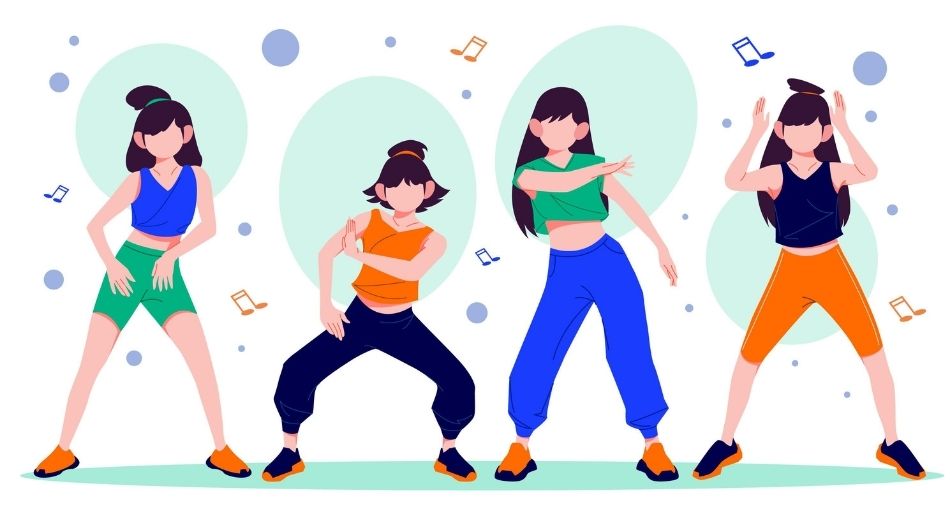
What is Dance Movement Therapy? Common questions people ask about Dance therapy.

The psychotherapeutic use of movement to improve emotional, social, cognitive, and physical integration is known as dance movement therapy. DMT can improve physical health by improving strength, and flexibility, reducing muscle tension, and improving coordination. It can also provide significant mental health advantages, such as stress reduction and even symptom relief from anxiety and depression.
The majority of individuals are aware that dancing is beneficial to their health because it improves heart rate, muscle tone, balance, and coordination. Dance can also improve a person's mood, improve body image, and provide an enjoyable outlet that can help to reduce overall tension and anxiety. While all of these features are valuable, dance/movement therapy elevates therapeutic dance to a new level. Dance therapists provide a safe space for people to express themselves, and those in therapy with a certified dance therapist have the right to confidentiality. Movement becomes more than just a form of exercise; it becomes a form of communication. Dance allows people in treatment to express both conscious and unconscious feelings, allowing a therapist to respond in kind. Dance therapists utilise a "movement vocabulary" that is based on physical expression rather than words to help people work through challenges.
A variety of physical and mental health disorders can be treated using dance and movement therapy. It can be beneficial for persons who suffer from body image issues and for enhancing self-esteem. It may help with the following conditions: Anxiety, Arthritis, Chronic pain, Communication issues, Dementia, Depression, Disordered eating, Low self-esteem, Post-traumatic stress disorder (PTSD).
Dance therapy offers a lot of advantages that make it a good alternative to other therapeutic methods. Dance/movement therapy emphasises body-based methods, whereas many treatment modalities, such as cognitive behavioural therapy (CBT), focus on cognitions or behaviours.
Observation, assessment, warm-ups, interventions, verbal processing, and warm-down phases focused on closure is common in DMT sessions. Sessions might be highly structured or non-directive and they can be conducted in groups or individually. Despite the fact that each dance/movement therapist has his or her own technique, all trained dance/movement therapists follow the same mission and theoretical principles:
Mission:
- Assist in the growth of people throughout their lives.
- Prevent, identify, and treat problems that are interfering with your ability to perform normally.
- Develop treatment goals after assessing, evaluating, and evaluating.
- Implement the interventions that have been planned.
- Develop and adapt treatment to fit the client's changing demands.
Key Concepts:
- Because the body and mind are intertwined, each change in one has an effect on the other.
- Personality traits can be shown through movement.
- Nonverbal communication is an important part of the therapeutic partnership.
- Unconscious material/processes can be represented by movements, which can be symbolic.
- New ways of being can emerge from movement improvisation/experimentation.
Common Questions asked about Dance/Movement Therapy -
1. What is Dance/Movement Therapy?
Dance/movement therapy (DMT) is defined by the American Dance Therapy Association (ADTA) as the psychotherapeutic use of movement to promote emotional, social, cognitive, and physical integration of the individual, for the purpose of improving health and well-being. It started as a field in the 1940s as early innovators, many of whom were accomplished dancers, began to realize the benefit of using dance and movement as a form of psychotherapy. It is a holistic approach to healing, established on the empirically supported defence that mind, body, and spirit are inseparable and interconnected; changes in the body reflect changes in the mind and vice versa. DMT as an embodied, movement-based approach is usually difficult to explain, as it is critical to actively engage in the process to get a true sense of what it is.
2. What kind of issues can dance therapy help with?
Dance therapists work with people in therapy to help them improve their body image and self-esteem. It is commonly used to treat physical, psychological, cognitive, and social issues.
3. How effective is dance therapy?
- A 2019 review concluded that dance therapy was an effective intervention for the treatment of adults with depression.
- A 2019 review of studies concluded that dance movement therapy helped to reduce anxiety and depression. It also enhanced interpersonal skills, cognitive skills, and overall quality of life.
- A small 2020 pilot study published in the Journal of Eating Disorders found that DMT can be used as a complementary treatment option for eating disorders.
4. What types of populations use DMT?
In children, it helped them in the normal, psychosocial development, addressing goals to increase self-awareness and understanding, appropriate emotional expression, and recognizing healthy, safe ways for social development. It is also used to treat children with neurodevelopmental disorders, like Autism and ADHD.
In Adults, it is used to treat anxiety, depression, or other mood disorders, as well as individuals affected by physical or physiological impairments.
5. Where is DMT used?
DMT is used in many settings like hospitals, rehabilitation centres, nursing homes, preventive health programs, schools, childcare facilities and private practices.
6. How is dance therapy different from regular dancing?Dance is good for health as it enhances cardiovascular endurance, muscle tone, balance, and coordination. It also helps in improving people’s mood, their body image & also helps to reduce stress and anxiety. Even though they are considered to be beneficial, dance therapy is taken to a different level.
In dance therapy, the person in treatment has the right to have confidentiality & a safe place to express their feelings. The movements are turned into their own language. The person expresses their conscious & unconscious feelings through dance. The therapists help the person work through their issues using “movement vocabulary” that is based on physical expression instead of words.
Also read,
Benefits of dance therapy.
https://mpowerminds.com/blog/Benefits-of-dance-therapy
Does Dance Therapy really help others in overcoming their social anxiety?
https://mpowerminds.com/blog/Does-Dance-Therapy-really-help-others-in-overcoming-their-social-anxiety
What is Dance therapy & where to avail Dance therapy in Kolkata?
https://mpowerminds.com/blog/What-is-Dance-therapy-where-to-avail-Dance-therapy-in-Kolkata
Image credits - Freepik

Mpowering Minds 2026 – Women’s Mental Health Summit: Championing a New Era of Well-Being
Therapy Approaches That Help Heal Intergenerational Trauma: CBT, DBT, Somatic Work & More

